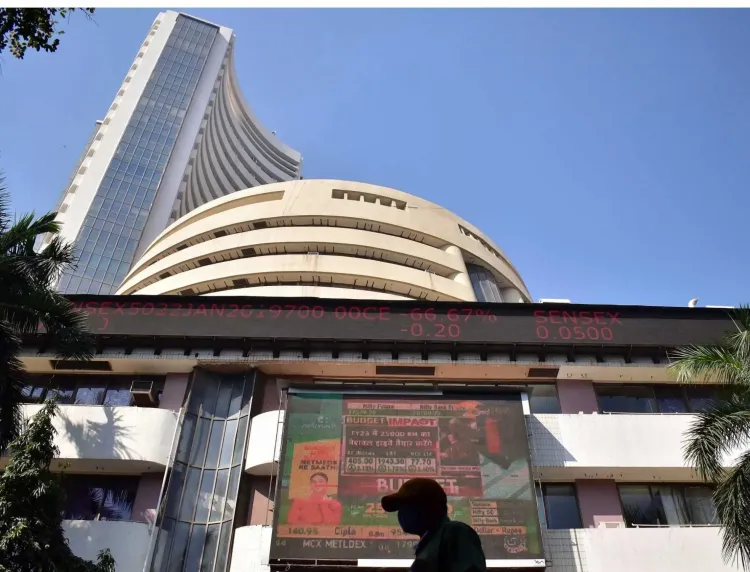Why Did Sensex and Nifty Open Lower Amid US-China Trade Tensions?

Synopsis
Key Takeaways
- Sensex fell by 113 points, or 0.13 percent.
- Nifty declined by 27 points, or 0.10 percent.
- Major stocks like Hindustan Unilever and Kotak Bank faced significant losses.
- Metal stocks emerged as the top performers.
- Analysts suggest a cautious trading approach amid volatility.
Mumbai, Oct 24 (NationPress) The Indian stock markets commenced trading lower on Friday as reports surfaced regarding the United States potentially instigating a new investigation into China concerning their 2020 trade agreement.
Surging oil prices, influenced by recent US sanctions against Russia, further dampened investor morale.
At the start of trading, the Sensex was down 113 points, equivalent to 0.13 percent, at 84,443, while the Nifty dipped by 27 points, or 0.10 percent, to 25,866.
Regarding the technical outlook for Nifty, analysts stated, “The index continues to show a sideways to bullish trend, remaining firmly above key support levels at 25,700 and 25,750.”
“The immediate resistance is positioned at 25,950, with further upside targets set at 26,000 and 26,100. The overall trend stays bullish as long as the index maintains above 25,780 at close,” they added.
Major stocks such as Hindustan Unilever, Kotak Bank, Axis Bank, Titan, Power Grid, ITC, NTPC, Tech Mahindra, Maruti Suzuki, and Axis Bank were among the primary laggards, experiencing losses of up to 3.5 percent.
Conversely, ICICI Bank, Tata Steel, Bharat Electronics (BEL), Mahindra & Mahindra, Bharti Airtel, HDFC Bank, and State Bank of India were showing gains, helping to mitigate the overall declines.
In the broader market, buying activity persisted as the Nifty MidCap index edged up 0.05 percent, and the Nifty SmallCap index rose 0.09 percent.
Sector-wise, metal stocks shone as the Nifty Metal index advanced 1 percent, followed by modest increases in the Realty and Financial Services sectors.
However, FMCG stocks faced headwinds, with the Nifty FMCG index declining 1.4 percent, making it the day's biggest sectoral loser.
“Given the current scenario of increased volatility and mixed market signals, traders are encouraged to take a cautious ‘buy-on-dips’ approach, particularly when leveraging,” advised market analysts.
Booking partial profits during price rallies and implementing tight trailing stop-losses will be essential for effective risk management, according to the analysts.









